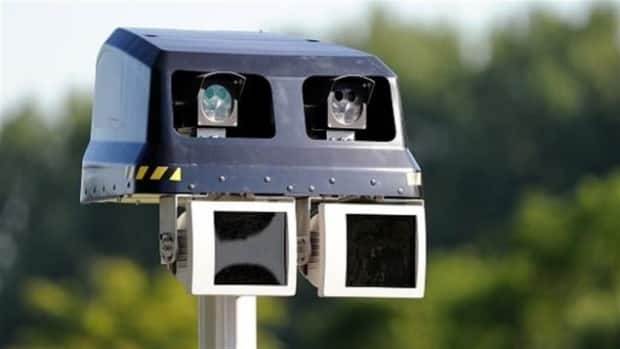Ontario green lights use of photo radar in municipalities to crack down on speeding
The Ontario government will allow municipalities to enforce speed limits in school and community safety zones through the use of photo radar starting on Sunday.
New regulations, which govern automated speed enforcement (ASEs), will "provide the framework to support municipalities in developing responsible, transparent and effective programs to promote road safety in their communities," according to Barbara Mottram, a spokesperson for Transportation Minister Caroline Mulroney.
Toronto has been pushing for these changes as part of its Vision Zero plan to eliminate all traffic-related fatalities.
Last year, the city put photo radar in dozens of school zones, but the devices could only gather data.
Now, these regulatory changes will give the city the ability to ticket or charge drivers in school and safety zones on roads with a speed limit of less than 80 km/h.
Toronto Mayor John Tory said he is pleased with the changes, but added that the province is enforcing a few conditions that he called "cumbersome." One requires municipalities to put up signs warning drivers of the photo radar 90 days before it comes into effect.
"That means one more thing to do and 90 more days before you can go to some of the hotspots where people speed, but we're going to make the best of the whole situation," Tory said on Saturday.
"[It] might make it a little more cumbersome for us, but it's a step forward."

Additional requirements from the province include:
A consistent approach to signage, camera placement and local public safety and educational initiatives.
Community safety zone selection criteria to ensure the program is targeting locations where the risk of speeding-related crashes is highest.
A review of the program by the ministry of transportation after 180 days.
The ministry said additional details will be offered in the coming days to clarify the types of ASE technology that may be used by municipalities and a description of enforcement procedures for any resulting Provincial Offences Act charges.
Although Toronto plans to make use of the new regulations, the choice to enforce speed limits through photo radar will remain optional for municipalities.
"The province has filed enabling regulations under the Safer School Zones Act that will give municipalities the ability to adopt new and enhanced tools to promote safety," the statement reads.
"Automated speed enforcement is a municipally driven initiative as municipal governments are in the best position to determine what needs to be done in order to improve road safety on municipal roads."
Threat of 'pretty big fat ticket' will slow traffic, Tory says
Tory said he has been waiting for the province to green light these changes for four years.
"It's a step forward because we need automated speed enforcement to get people to slow down," he told CBC Toronto on Saturday.
"We've changed the speed limits, but in order to then make that really work, you have to enforce those laws and we just can't afford to have a police officer on every corner."
The mayor said the new system will send the message to people to slow down and obey the law.
"I think that the notion of people getting a pretty big fat ticket, and their insurance company will know about it, I think this is going to do a lot to slow people down," he added.
Ontario tried photo radar once before
This is the second time photo radar has tried to catch speeding drivers in the province
Mike Harris, who served as the Premier of Ontario from June 1995 to April 2002, scrapped photo radar shortly after coming into office, a promise he made during his campaign following heavy opposition to the technology from drivers.
"No evidence has been presented to us that photo radar has made our highways safer," Harris said at the time.

